Making fermented garlic is a super easy way to preserve and prolong the life of garlic cloves. This simple lacto fermentation recipe creates a uniquely delicious garlic flavor and adds probiotics to your diet too.
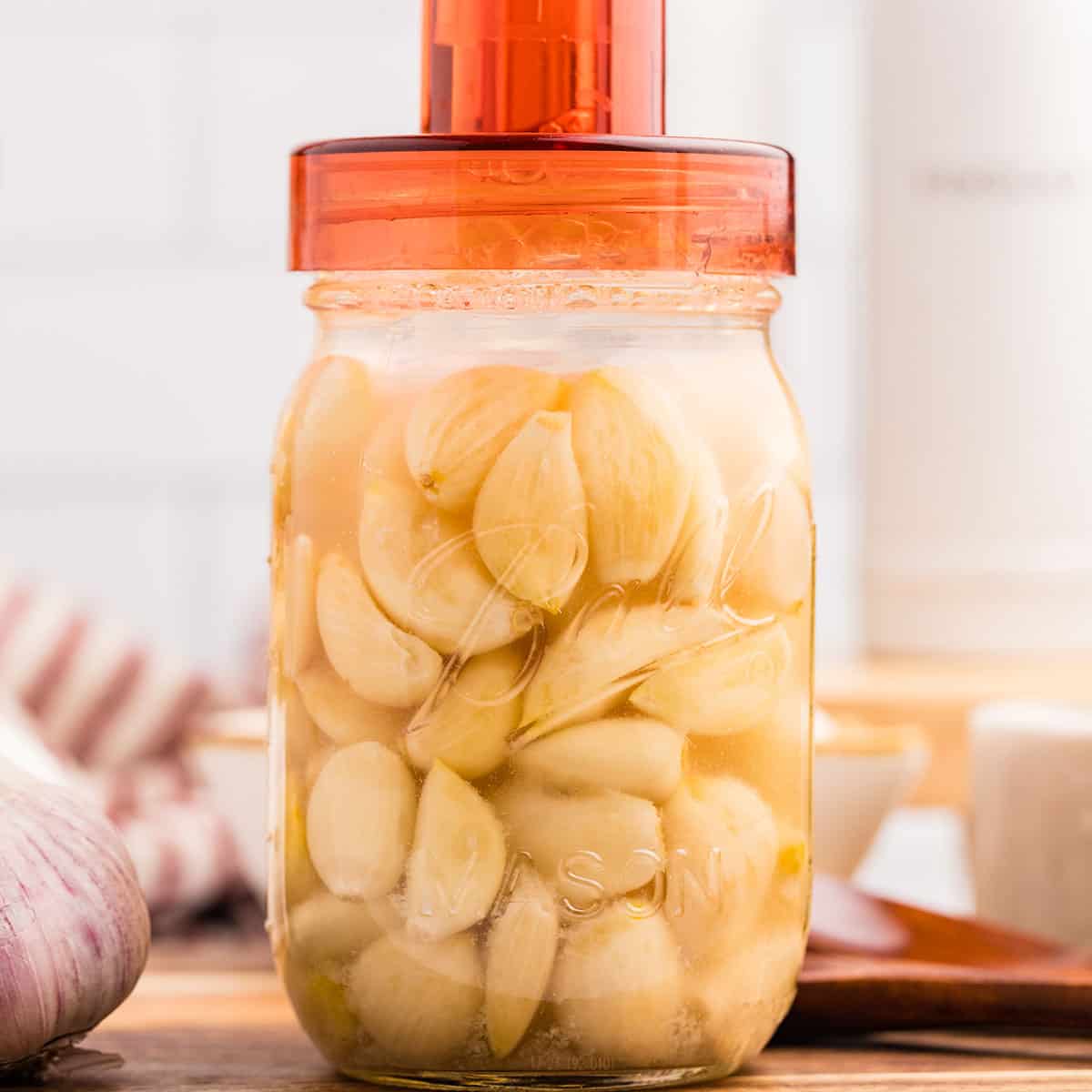
Want to save this post for later?
For the Love of Garlic
I don’t know about you, but I just don’t feel like the world would turn without garlic in my life. It adds spice, depth, and amazing flavor to everything it touches. I’ve even had garlic ice cream!
Plus, garlic is loaded with tons of vitamins and minerals, and even has medicinal benefits. What’s not to love? And, when we love something, what do we do? Ferment it!
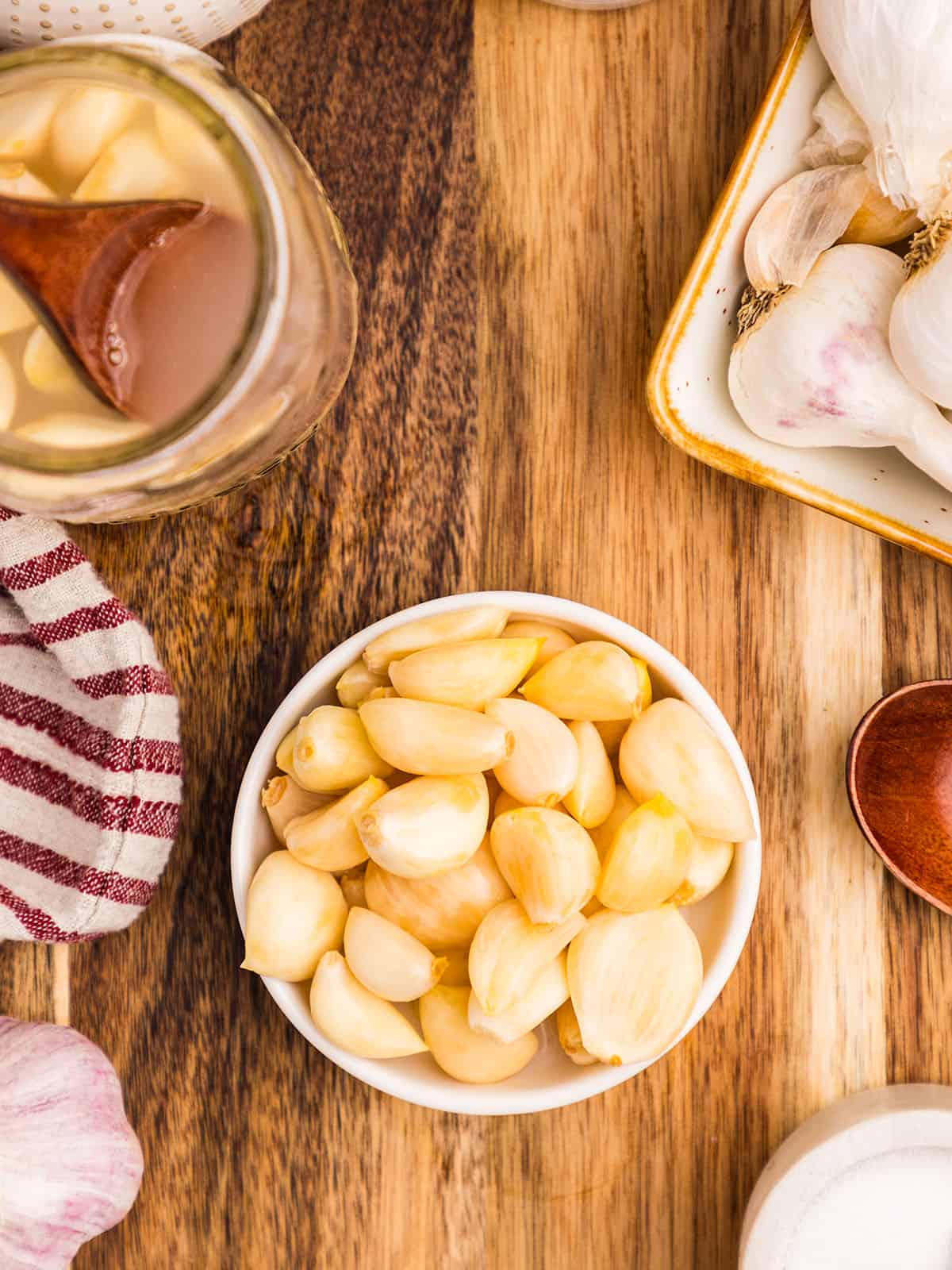
Fermentation is my favorite way to preserve garlic and, well, pretty much anything. I started of with fermented honey garlic, which is amazingly tasty and also a super beneficial immune booster.
I also quick pickle garlic regularly for super quick use and a mellow flavor. As delicious as these preserved garlic recipes are, nothing is quite like lacto fermented garlic!
If you love garlic, use it often in tons of your dishes, want to boost your probiotics and food flavor, then this recipe is for you! It is perfect in replacement anywhere fresh garlic is called for.
Super simple to make and full of antiviral, antibacterial, and immune boosting goodness, you’ll be reaching for this preserved garlic daily.
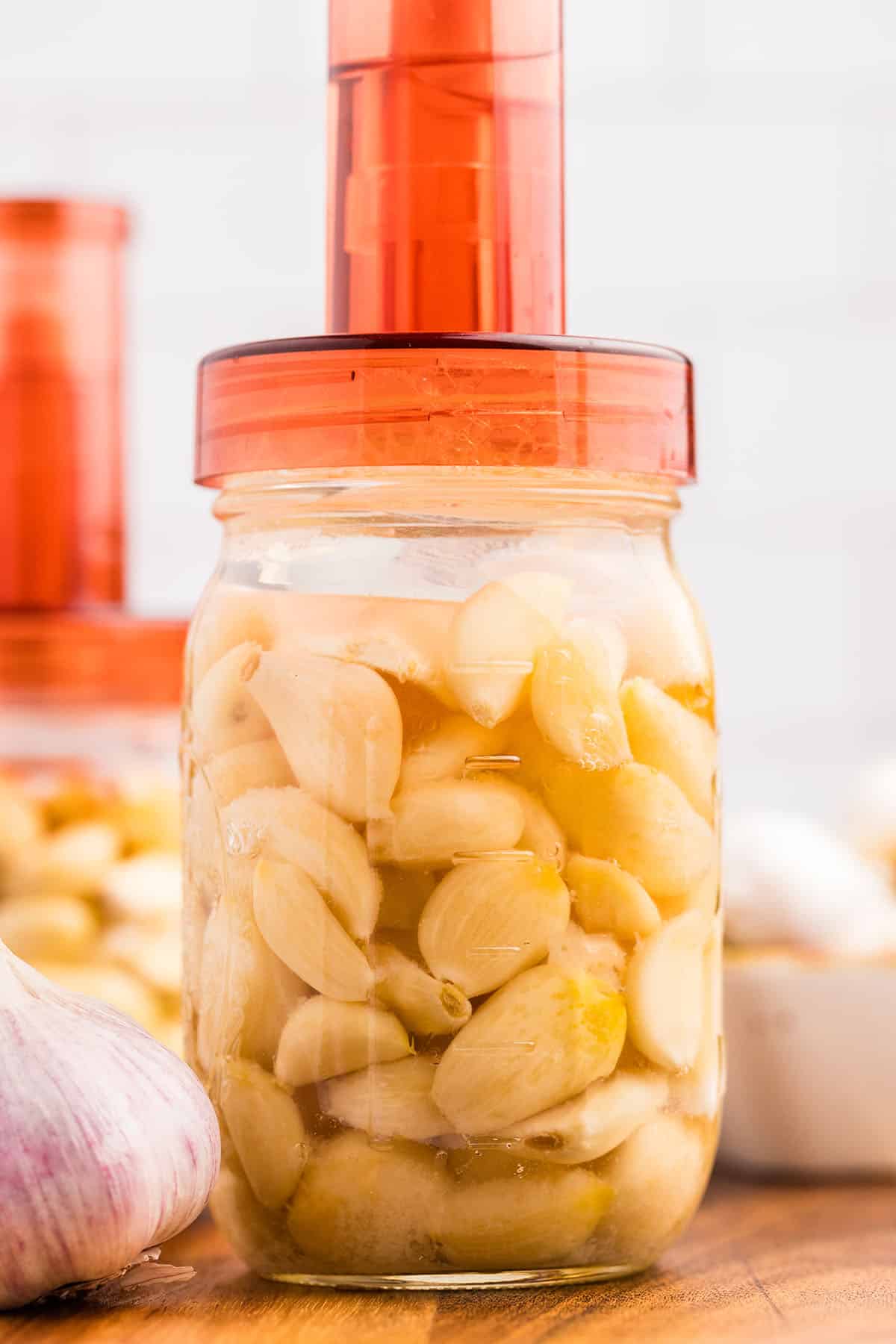
Blue Garlic
It’s important to note that sometimes preserved garlic sometimes turns blue or greenish in color. If this happens, don’t worry! It’s normal and not harmful at all, and will be just as tasty and healthy.
Botulism
There tends to be worry about botulism when it comes to preserving garlic, but it’s really not a concern in this recipe. Lacto ferments have no risk of botulism. Phew! Crisis avoided, moving on.
Fermented Garlic Recipe
This simple fermentation recipe only calls for a few ingredients, and as always the main ingredient is time. Time makes everything better! This recipe is also super easy to double or more, just use more jars.
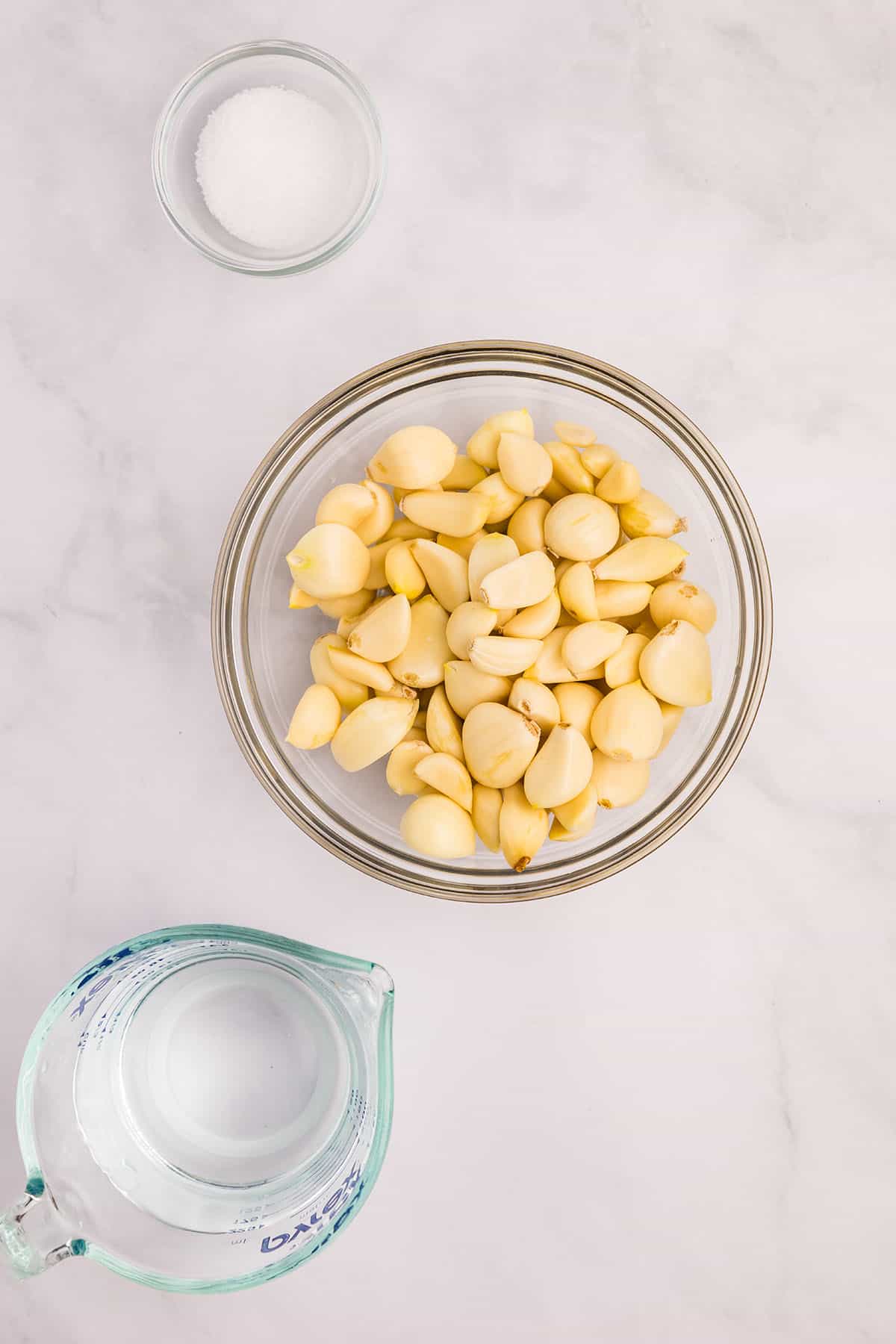
Ingredients
Whole garlic cloves: Use fresh peeled garlic cloves for this recipe to get the best results.
Water: It’s very important to use non-chlorinated water, otherwise it could kill the ferment. Most public water systems are chlorinated, so it’s best to use bottled water or another non-chlorinated confirmed source.
Salt: Only used non-iodized salt for this recipe. It’s important to know your salts for preservation!
How to Ferment Garlic
First, place the peeled garlic cloves into a pint jar. Make sure to leave some space at the top so there is room to add a fermentation weight.
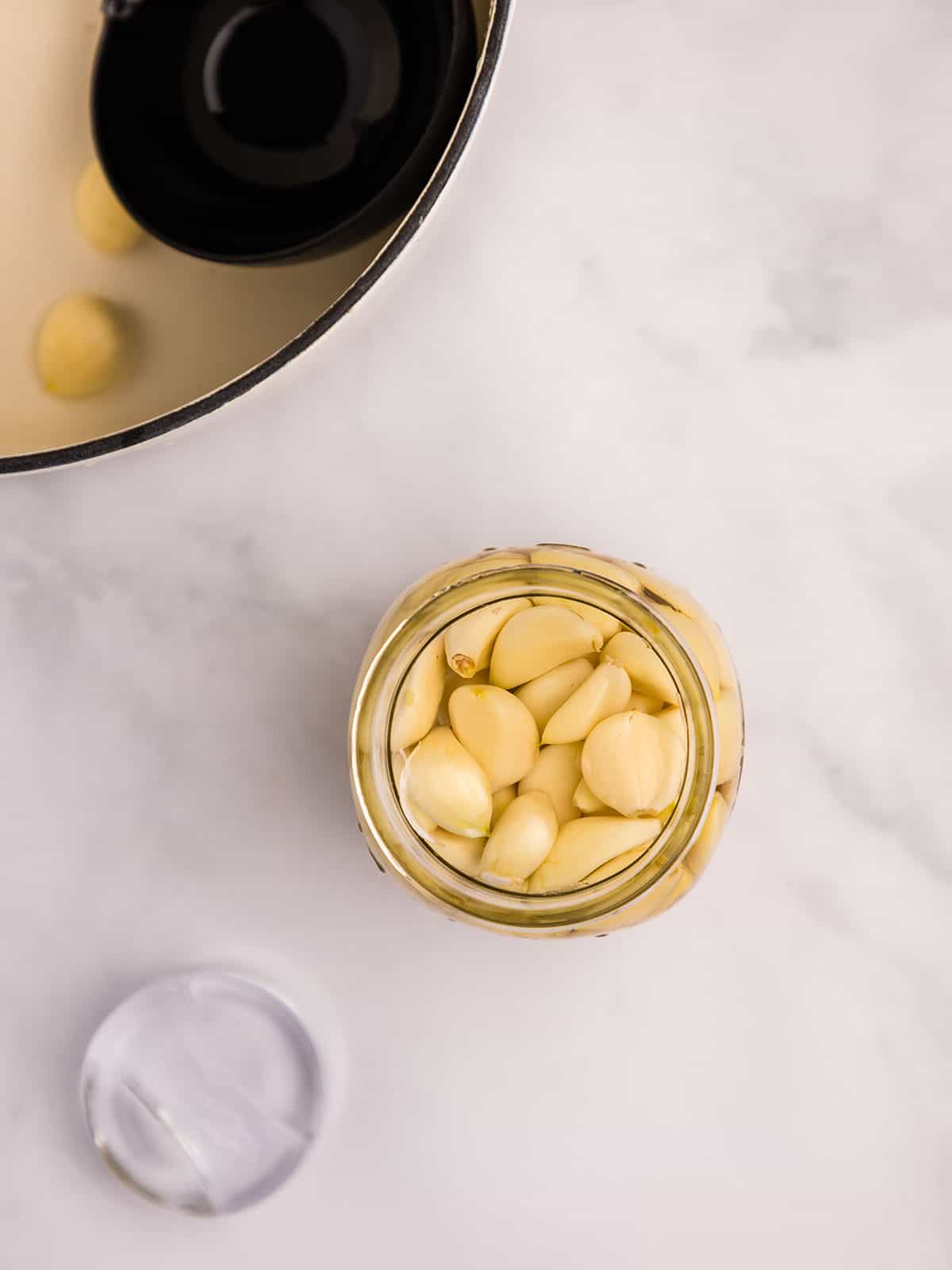
Make the brine by stirring the salt into the water until it dissolves.
Then pour the brine over the garlic in the jars, making sure the garlic is completely covered with brine.
Put a fermentation weight on top of the garlic to keep it submerged under the brine.
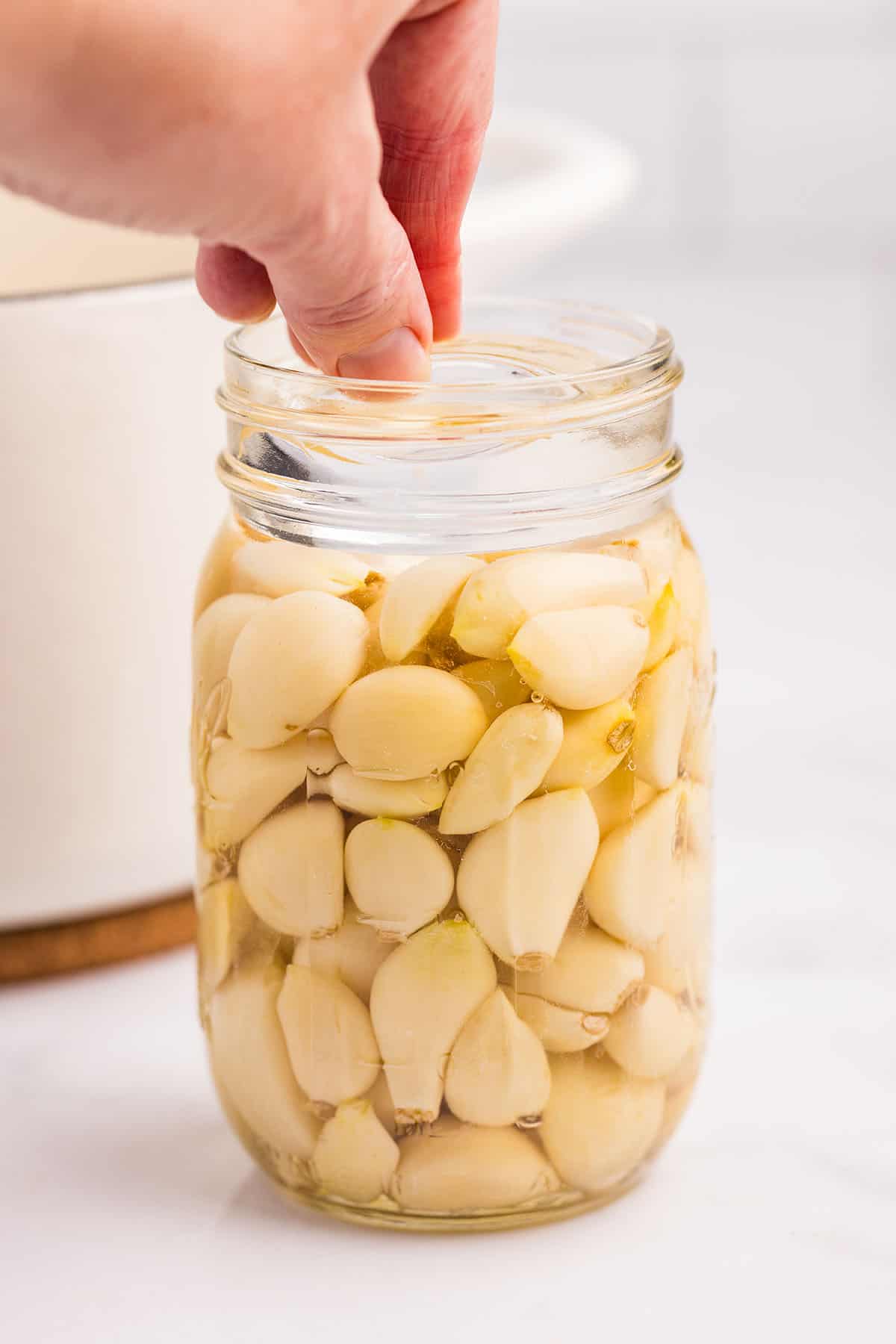
Then top the jar with a fermentation lid and airlock.
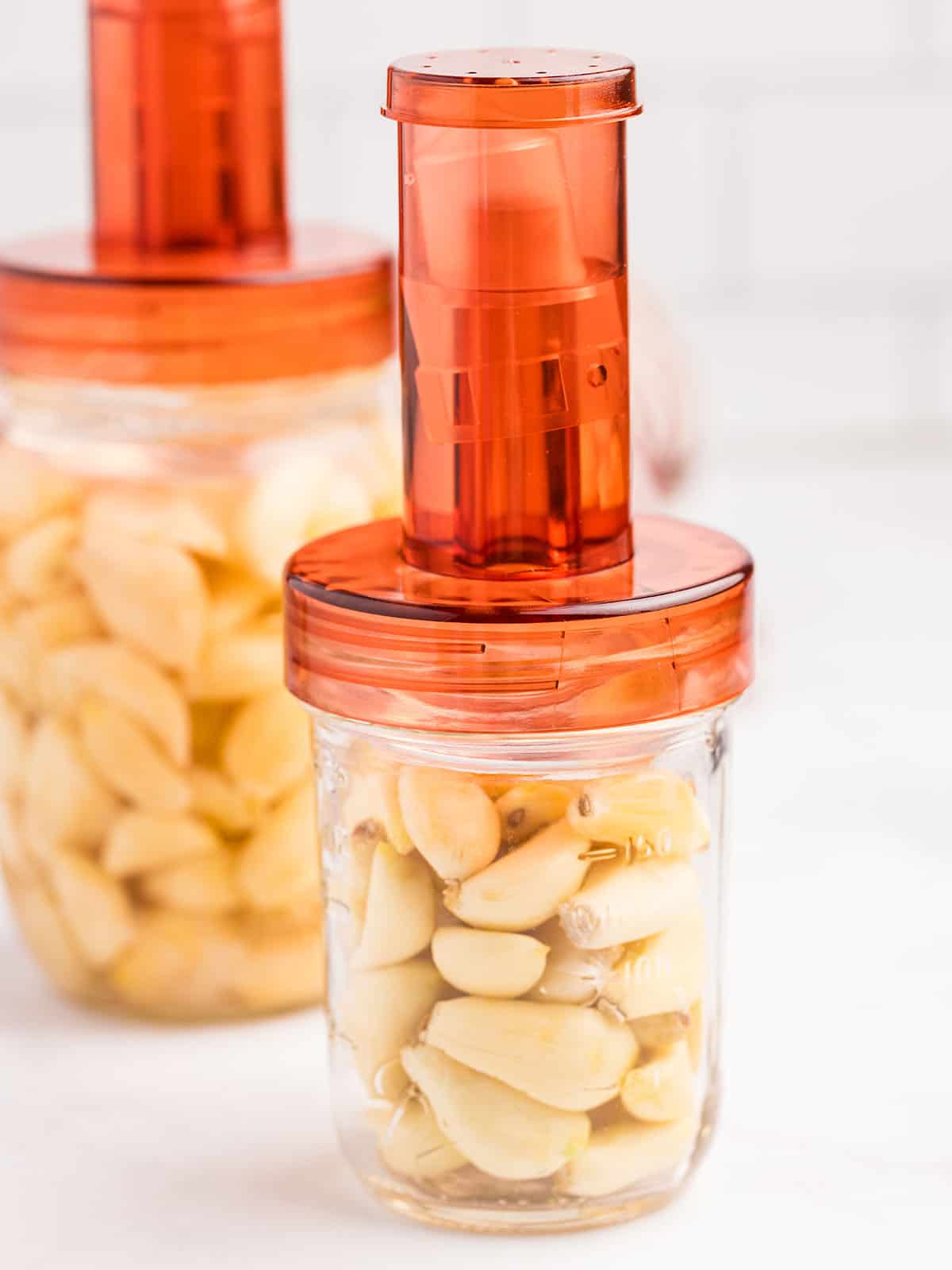
Let the jar sit at room temperature in a place out of direct sunlight for 2-3 weeks to ferment. Then take the airlock off and the weight out and place a lid on the jar.
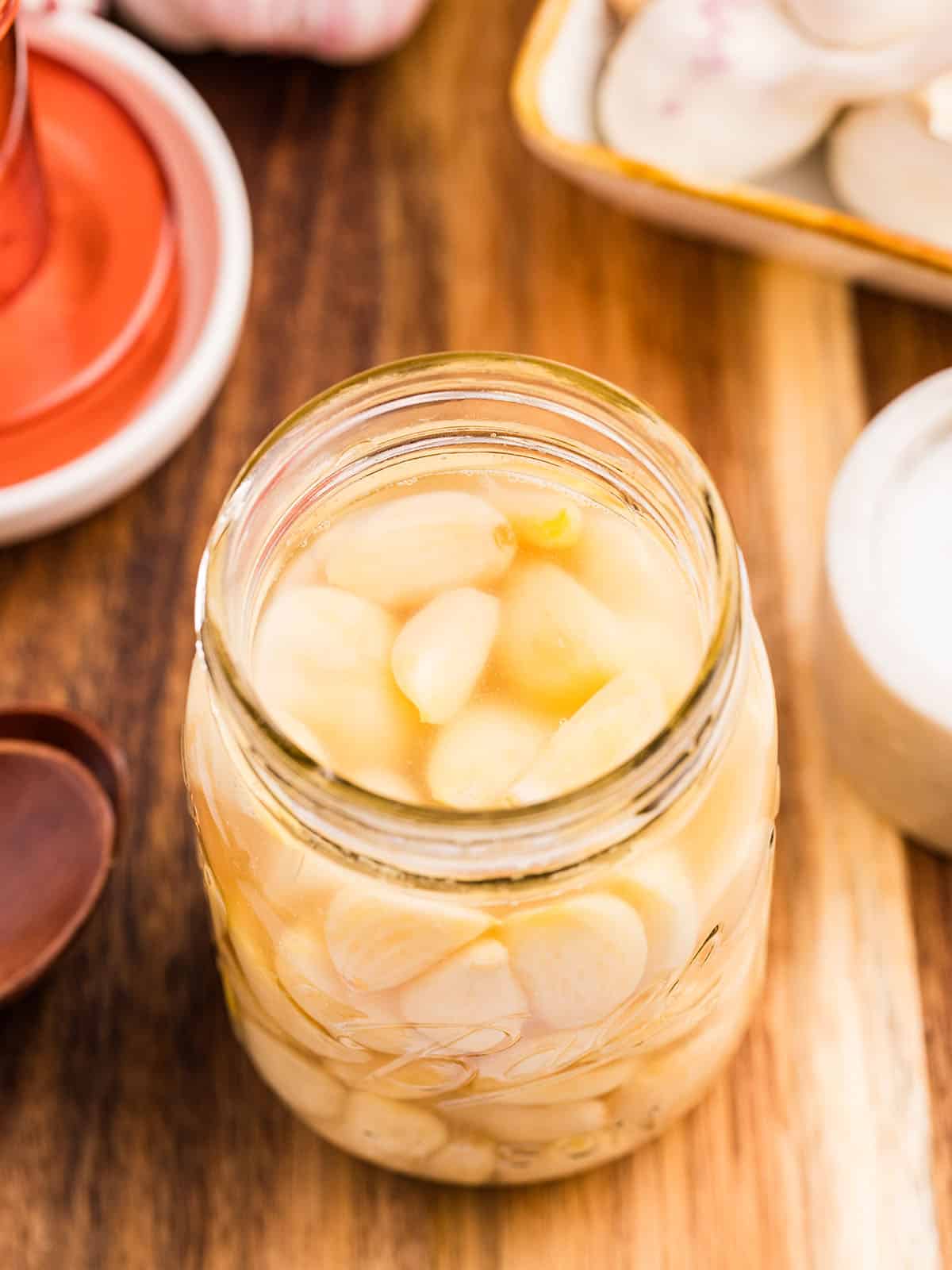
Store fermented garlic in the refrigerator to slow fermentation.
Note: Sometimes, the surface of the brine may form a white film called kahm yeast, which is harmless. If it’s not black or green fuzzy mold, then it’s ok to use.
Fermented Garlic Uses
The flavor of lacto fermented garlic tends to be pretty strong, so I recommend cutting the amount in half if replacing fresh garlic. Use it it all the same ways you would otherwise use regular garlic.
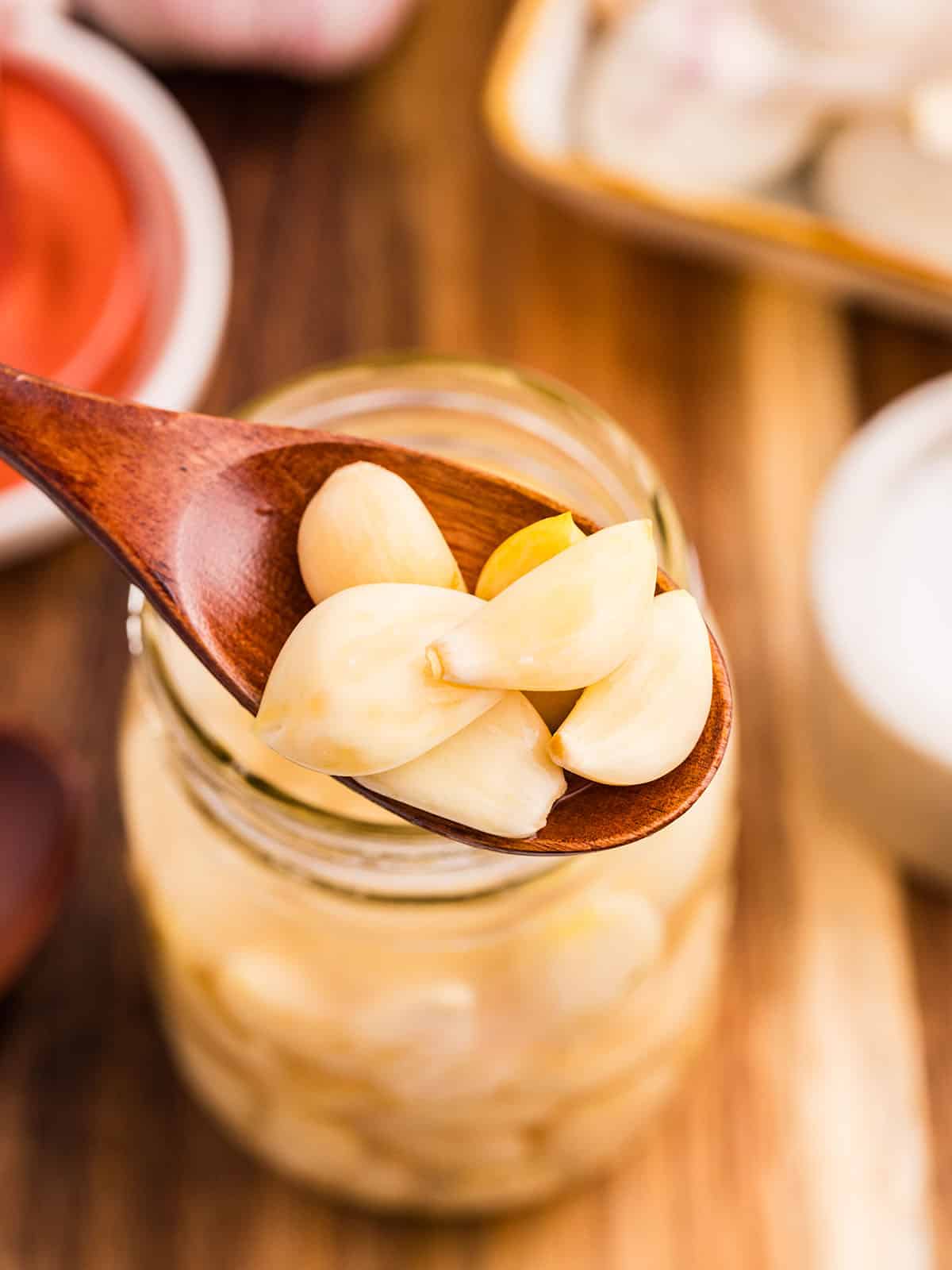
Enjoy the probiotic benefits and gut healing nature of garlic plus fermentation when you use fermented garlic uncooked.
This garlic is wonderful in marinades, dips, salad dressings, tzatziki sauce, as a zingy snack on a charcuterie board, in hummus, pesto, and more. However you use it, you’re sure to love it!
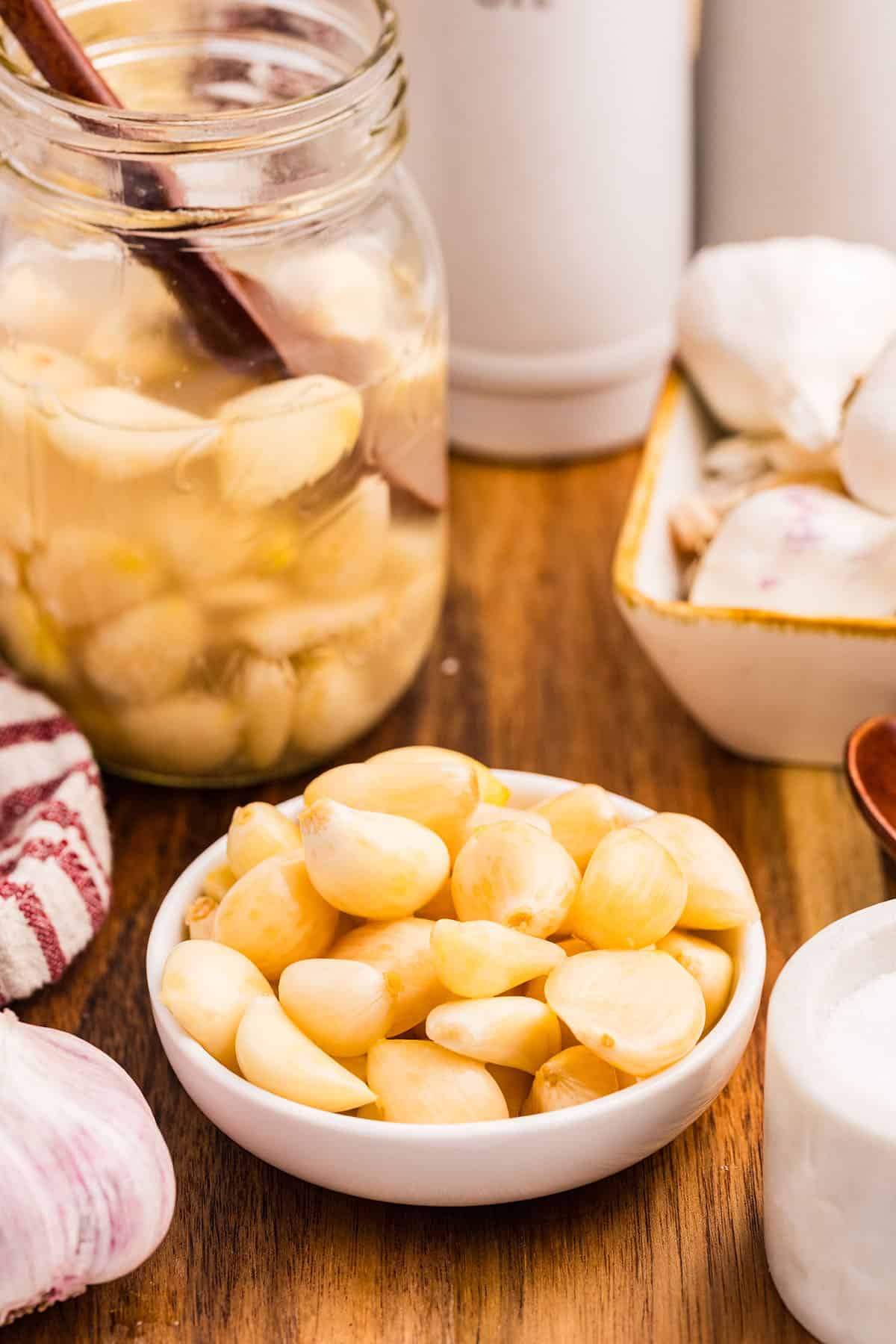
Fermented garlic should last at least 6 months in the refrigerator, if not indefinitely. As long as it tastes good and isn’t growing anything weird on it, rest assured it’ll do you and your gut good!
More Delicious Ferments
- Fermented Cherry Tomatoes
- Fermented Cattail Shoots
- Fermented Dilly Beans
- Fermented Asparagus with Garlic
- Fermented Cucumber Dill Pickles
Fermented Garlic
Ingredients
- 2 cups garlic cloves peeled
- 2 cups water non-chlorinated
- 1 tablespoon salt non-iodized
Instructions
- Place the peeled garlic cloves into a pint jar, leaving some space at the top so that a fermentation weight can be added.
- Make the brine by stirring the salt into the water until it dissolves.
- Pour the brine over the garlic, covering it completely.
- Put a fermentation weight on top of the garlic to keep it under the brine, then top the jar with a fermentation lid and airlock.
- Let the jar sit at room temperature for 2-3 weeks to ferment.

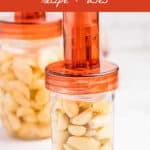
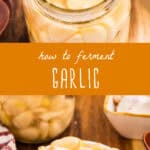
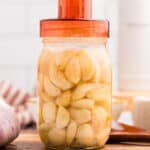

can I reuse my brine after I have eaten all my garlic? this was delicious!!!
It’s best to restart a new jar every time to prevent cross contamination. I usually use the leftover fermented garlic honey on savory breads and or over grilled veggies.
My garlic stopped forming bubbles just two days short of two weeks, and is very cloudy. Is it done fermenting? Should I be concerned of the cloudiness? Thanks!
Hi Mike. If there aren’t anymore bubbles over a few days, I would screw down the lid and store in cool, dark pantry. Cloudiness is totally normal, but if you’re concerned, take a pH test.
I was looking for a link as to where to buy the weight and airlock. Do you have a link to where yours came from? Thank you.
Under the equipment section on the recipe card at the bottom of the page, you can click on each piece of equipment and it will take you to where I bought it.
hi – what can be used for the fermentation weights and other than a fermentation lid, how else can the air tight lock be achieved? As in other canning methods?
Some people use a zip-top bag filled with water in place of a fermentation weight. If you don’t have an airlock, you’ll need to burp your jar (open the lid to release the built up gas) at least twice a day.